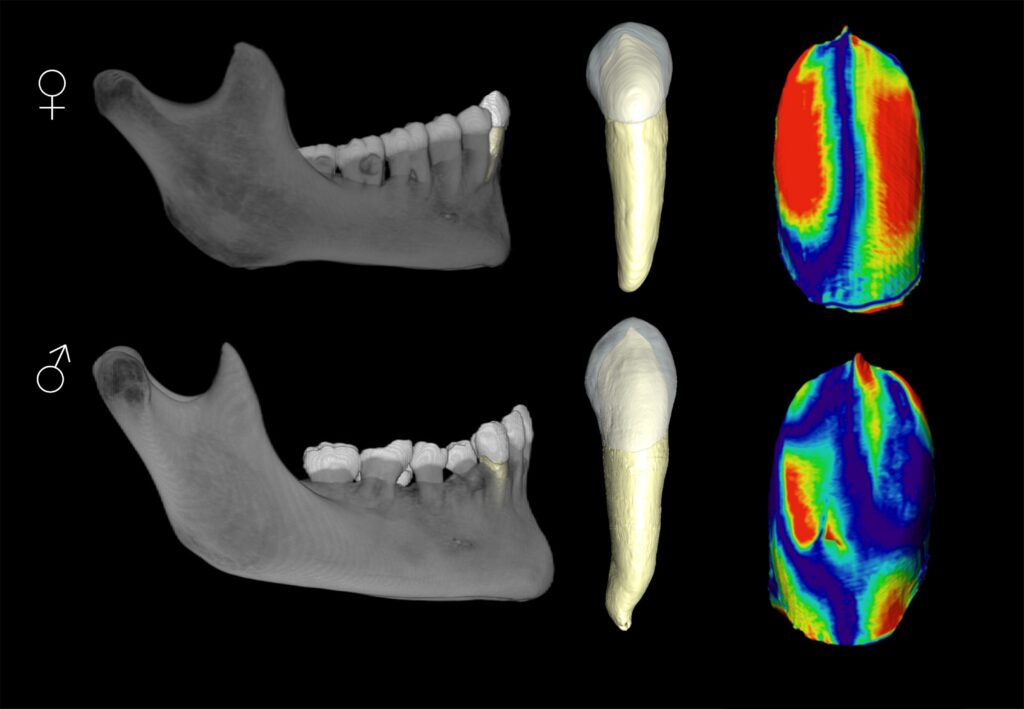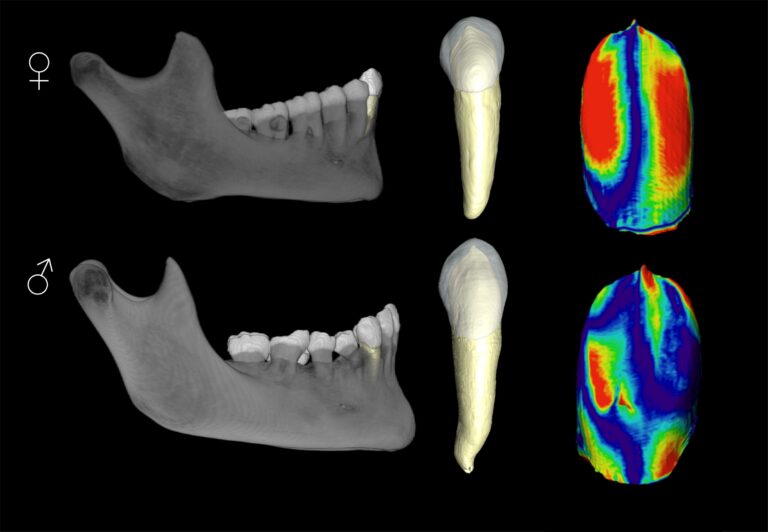The canines reveal new keys to sex estimation in human populations
A study by the CENIEH Dental Anthropology Group describes the main existing morphological differences in the internal structures of the canines of men and women in modern populations and highlights the utility of this dental piece for the creation of biological profiles.
The Dental Anthropology Group at the Centro Nacional de Investigación sobre la Evolución Humana (CENIEH) has published a paper in the American Journal of Biological Anthropology on the morphological differences between the canines of men and women, underlining their importance in the creation of biological profiles.
The differences in size and morphology of the canines are almost imperceptible to the naked eye in Homo sapiens, but the study shows that male canines conserve traits inherited from the internal structure of our ancestors, which are potentially valuable for devising new sex estimation methodologies.
This investigation centers on sexual dimorphism in the dentine of the canines, which present notable differences between the sexes, in both primates and human beings. Modern male canines show vestiges of the so-called canine-premolar honing complex, a structure observed in many other primates such as chimpanzees and gorillas. This complex plays a crucial role in facilitating the maintenance and efficacy of the canines, which are used as weapons when competing for resources or for females of the group in these species.
These differences are detectable because the dentine tends to be conserved. This structure, which lies below the enamel in dental pieces, presents morphological characteristics similar to those seen on the outer surface of the tooth. However, in the dentine, the traits are generally expressed more clearly. In addition, as it is subject to fewer external environmental pressures than the enamel, the dentine is capable of retaining certain traits, making it more conservative from a morphological perspective.
As Cecilia Yacobi Izquierdo, the main co-author of this study, emphasizes, it was possible to assess the dentine thanks to the application of computerized axial microtomography and 3D morphometric geometry. Using the micro-CT facility at the Microscopy and Micro-Computed Tomography Laboratory at the CENIEH has enabled the authors of this study to analyze precisely the internal structure of the canines, highlighting the importance of these techniques and their enormous potential for physical anthropology.
“Our work shows, once again, that the canines exhibit sufficient dimorphism to be employed in devising new techniques for sex estimation in human remains, but also stresses the importance of micro-CT techniques in fields ranging from archaeology to legal medicine,”
explains Yacobi, who is a doctoral student on the Doctorate in Biology program at the Autonomous University of Madrid (UAM), under the supervision of Cecilia García Campos and Daniel García Martínez, affiliate researchers at the CENIEH.

Bibliographic information:
Press release from Centro Nacional de Investigación sobre la Evolución Humana – CENIEH



